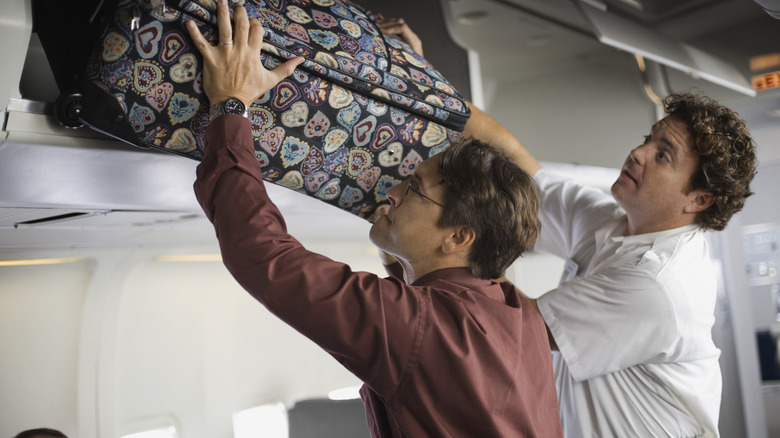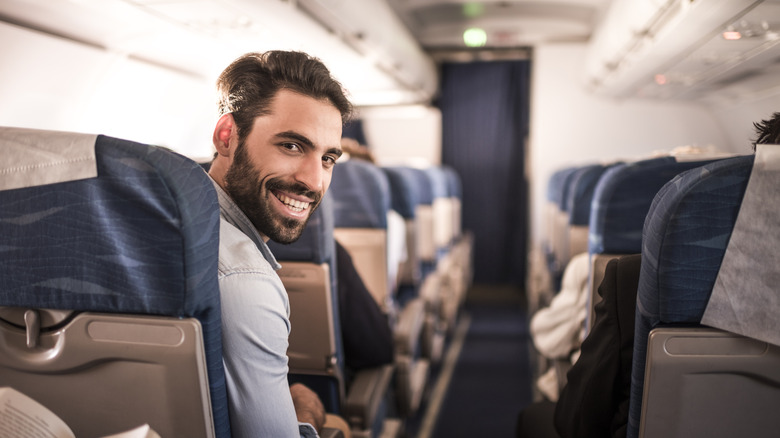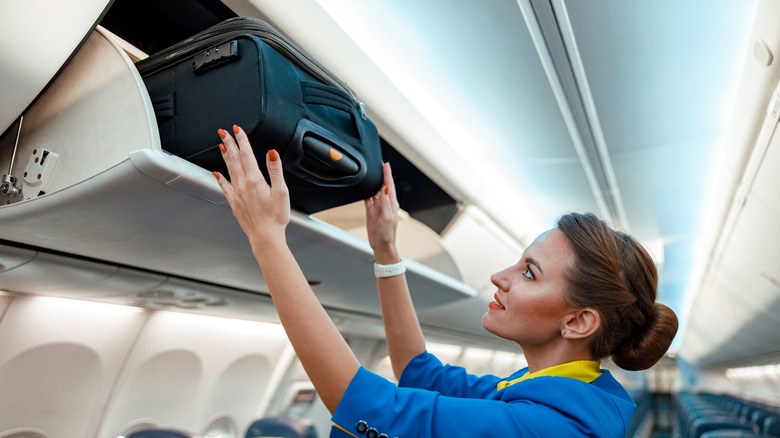What To Know About Overhead Bin Etiquette Before Your Next Flight
It can be one of the most stressful moments of a flight (and the plane hasn't even taken off yet): everyone is squeezing past each other and hunting for a suitable spot to stow their carry-on in the overhead bins. If you've ever boarded toward the end of this process, you may have experienced that moment of alarm when you realize there isn't room in the bin above your seat, leading to a frantic search.
It can get a bit tense — especially if other passengers are also on the hunt for bin space. The tension can even start in the terminal as travelers wait to board, eyeing up each other's carry-on to see whose is the most space-devouring.
The situation can also be very stressful for the cabin crew, especially as the clock ticks down to the scheduled departure time. But don't despair: With these tips, you can manage the bin situation and enjoy a stress-free flight.
Overhead luggage bin basics
Let's talk about the basics. One sure way to infuriate your fellow passengers and flight attendants is to put your carry-on into an overhead bin lengthwise, thus eating up space and preventing others from stowing their gear in the same space. If your carry-on has wheels, the correct method of placing it into one of the bins is endwise, with the wheels going in first. This also leaves the handle easy to grab for quick departure once you've landed safely. There is a caveat to this tip as it usually only applies to newer planes with taller bins; older models sometimes have bins that are too short for this method and still create storage difficulties.
If your carry-on weighs a ton, you might be on your own. You can ask a member of the cabin crew to help lift it, but they aren't obliged to help in these situations. They're not being awkward — it's just an understandable act of self-preservation. Since they are paid for when the plane is in the air, insurance only covers injuries sustained during their shift and they can't risk a back injury while the craft is on the ground.
If you want to guarantee your luggage stays above your seat, it is worth booking priority boarding or first-class flights with dedicated bin space. On the flip side, don't get annoyed if you dash onto the plane last minute and find that the only place for your bag is somewhere else in the cabin.
Further luggage bin etiquette
Flight attendants have to deal with a lot — from long hours and sick kids to unruly passengers. Do them and everyone else a favor by following the key rules of bin etiquette. First, consider what you are actually placing in the overhead bin. While it is nice to have room to spread out, it's good form not to cram all your personal items in with your main carry-on since you'll be taking up precious space. Smaller items, like handbags or jackets, should go under the seat in front.
What is worse, insisting on putting all your items in the overhead luggage can potentially cause a flight delay, because surplus items might need checking if there isn't enough space. If there is some room available once boarding is complete, then feel free to use it.
Some passengers like to dump their bags in the first bin they find, regardless of where they are sitting. This can cause problems for passengers who are sitting beneath where you stowed your items. If that sounds like you, at least choose a bin within eyeshot. The flight attendants might need to shuffle bags to fit everything in and if they have an unclaimed item, it could end up removed from the plane.


